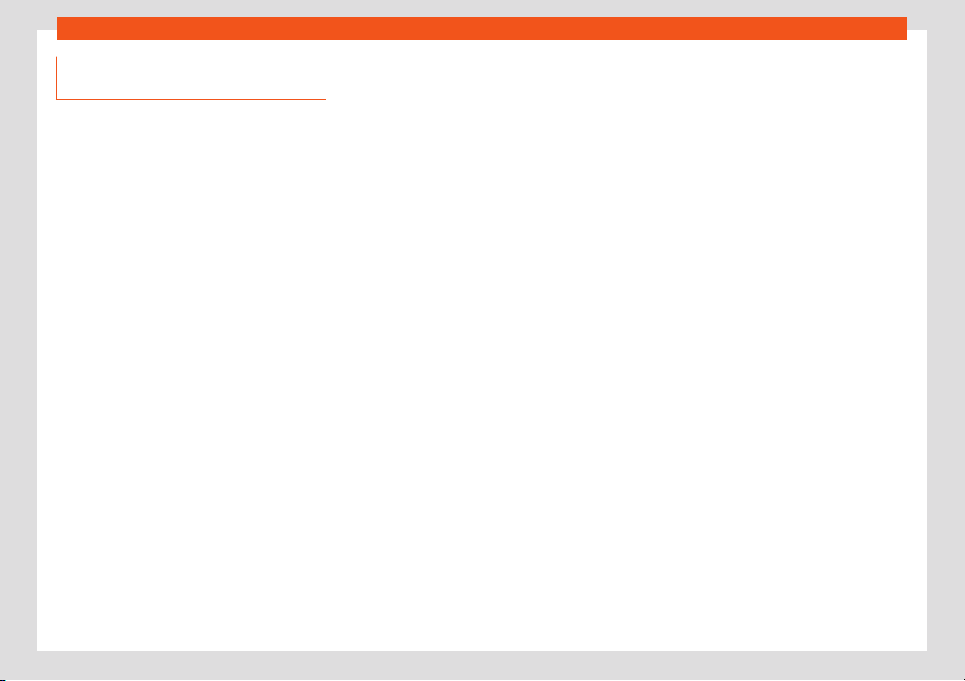Loading ...
Loading ...
Loading ...

Start and driving
Economical and environmentally-
friendly driving
Fuel consumption, environmental pollution
and wear to the engine
, brakes and tyres de-
pends in large part on your driving style. By
adopting an economical driving style and an-
ticipating the traffic situation ahead, you can
easily reduce fuel consumption by 10-15%.
Some tips on how to help you reduce pollu-
tion while saving money are listed below.
Active cylinder management (ACT
®
)*
Depending on vehicle equipment, the active
cylinder management (ACT
®
) may automati-
cally deactivate some of the engine cylinders
if the driving situation does not require too
much power. When it is switched off, no fuel is
injected into these cylinders, hence total fuel
consumption may be reduced. The number
of active cylinders can be seen on the instru-
ment panel display.
›››
page 106.
Drive anticipating the traffic situation
A vehicle uses most fuel when accelerating.
When you anticipate situations, you have to
brake less often and, thus, accelerate less. If it
is possible, let the vehicle roll with a gear en-
gaged, for example, if you see a red light
ahead. The braking effect achieved in this
way helps to reduce the wear of brakes and
tyres; emissions and fuel consumption are re-
duced to zero (disconnection due to inertia).
Change gear early to save energy
An effective w
ay of saving fuel is to change
up quickly through the gears. Running the en-
gine at high rpm in the lower gears uses an
unnecessary amount of fuel.
Manual transmission: shift up from first to
second gear as soon as possible. We recom-
mend that, whenever possible, you change to
a higher gear upon reaching 2000 rpm. Fol-
low the “recommended gear” indication that
appears on the instrument panel
›››
page 243.
Avoid driving at high speed
We advise you not to drive at the top speed
permitted by the vehicle. Fuel consumption,
exhaust emissions and noise levels all in-
crease very rapidly at higher speeds. Driving
at moderate speeds will help to save fuel.
Avoid idling
It is worthwhile switching off the engine when
waiting in a traffic jam, at level crossings or at
traffic lights with a long red phase. The fuel
saved after only 30 - 40 seconds is greater
than the amount of fuel needed to restart the
engine.
The engine takes a long time to warm up
when it is idling. Mechanical wear and pollu-
tant emissions are also especially high during
this initial warm-up phase. It is therefore best
to drive off immediately after starting the en-
gine. Avoid running the engine at high speed.
Periodic maintenance
Periodic maintenance work guarantees that,
before beginning a journey, you will not con-
sume more than the required amount of fuel.
A well-serviced engine gives you the benefit
of improved fuel efficiency as well as maxi-
mum reliability and an enhanced resale val-
ue.
A badly serviced engine can consume up to
10% more fuel than necessary.
Avoid short journeys
To reduce the consumption and emission of
polluting exhaust gases, the engine and the
exhaust gas filtration systems should reach
the optimum operating temperature.
With the engine cold, fuel consumption is pro-
portionally higher. The engine does not warm
up and fuel consumption does not normalise
until having driven approximately four kilome-
tres (2.5 miles). This is why we recommend
avoiding short trips whenever possible.
Maintain the correct tyre pressures
Bear in mind that keeping the tyres at an ade-
quate pressure saves fuel. If the tyre pressure
is just one bar (14.5 psi/100 kPa) too low, fuel
consumption can increase by as much as 5%.
»
247
Loading ...
Loading ...
Loading ...